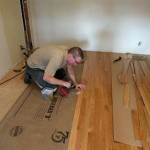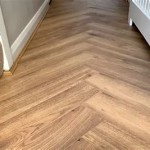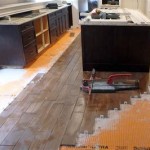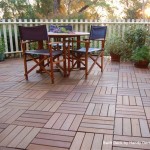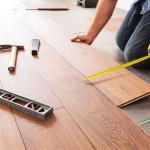Wood Vinyl Flooring Roll: A Comprehensive Guide
Wood vinyl flooring roll represents a practical and aesthetically pleasing alternative to traditional hardwood flooring. It provides the visual appeal of natural wood grain patterns while offering the benefits of vinyl, such as water resistance, durability, and ease of maintenance. This flooring solution is particularly well-suited for a variety of applications, ranging from residential kitchens and bathrooms to commercial spaces with moderate foot traffic. The "roll" configuration signifies its format: a continuous sheet that minimizes seams and installation complications, setting it apart from individual planks or tiles.
The composition of wood vinyl flooring roll typically involves several layers. The base layer often consists of a felt or foam backing, providing cushioning and sound insulation. Above this lies the core layer, which offers stability and resistance to indentations. The decorative layer, crucial to the aesthetic, is a high-resolution printed image that replicates the appearance of various wood species, grains, and finishes. Finally, a transparent wear layer protects the decorative layer from scratches, scuffs, and stains, determining the flooring's overall durability and lifespan. The thickness of the wear layer is a critical factor when selecting a wood vinyl flooring roll, as a thicker layer offers greater protection and longevity.
The manufacturing processes for wood vinyl flooring rolls have advanced significantly, resulting in realistic wood textures and patterns. Embossing techniques are employed to create a tactile surface that mimics the feel of real wood. The printed images have also improved, with high-definition printing technology capturing intricate details and variations found in natural wood. This combination of texture and visual fidelity creates a flooring option that is difficult to distinguish from genuine hardwood, especially to the untrained eye.
Understanding the Advantages of Wood Vinyl Flooring Roll
Wood vinyl flooring roll presents several compelling advantages compared to other flooring materials. These advantages range from practical considerations like cost-effectiveness and ease of installation to performance-related aspects such as water resistance and durability. Understanding these benefits is crucial for informed decision-making when selecting flooring for residential or commercial projects.
One of the primary advantages is its cost-effectiveness. Compared to hardwood, ceramic tile, or even some laminate options, wood vinyl flooring roll is generally more affordable. The lower material cost, combined with potentially lower installation costs (depending on the complexity of the project), makes it a budget-friendly choice for covering large areas. This cost advantage is particularly appealing for homeowners or businesses looking to renovate on a limited budget but still desire the visual appeal of wood flooring.
Installation is another area where wood vinyl flooring roll excels. While professional installation is often recommended for optimal results, the process is generally simpler and faster than installing hardwood or tile. The roll format minimizes the number of seams, reducing the time and effort required for installation. In many cases, homeowners with basic DIY skills can successfully install wood vinyl flooring roll, further reducing the overall cost of the project. The ease of installation also allows for quicker turnaround times, minimizing disruption to the home or business during renovation.
Water resistance is a significant advantage, particularly in areas prone to moisture, such as kitchens, bathrooms, and basements. Unlike hardwood, which can warp or rot when exposed to water, wood vinyl flooring roll is inherently water-resistant. This makes it an ideal choice for spaces where spills and leaks are common. The water-resistant properties also contribute to its ease of maintenance, as spills can be easily wiped clean without causing any permanent damage. This resistance to moisture also inhibits the growth of mold and mildew, promoting a healthier indoor environment.
Durability is another key benefit. The wear layer, which protects the decorative layer, is designed to withstand daily wear and tear, including scratches, scuffs, and stains. High-quality wood vinyl flooring rolls can last for many years with proper care and maintenance. The durability makes it suitable for areas with moderate foot traffic, such as living rooms, bedrooms, and offices. The resilience of the material also makes it comfortable underfoot, reducing fatigue and providing a more pleasant walking experience compared to harder surfaces like tile or concrete.
Key Considerations When Choosing Wood Vinyl Flooring Roll
Selecting the right wood vinyl flooring roll requires careful consideration of several factors to ensure that the chosen product meets the specific needs and requirements of the installation environment. These factors include the intended use of the space, the level of foot traffic, the subfloor conditions, and the desired aesthetic.
The wear layer thickness is a critical factor. The wear layer is the protective topcoat that shields the decorative layer from scratches, stains, and general wear and tear. A thicker wear layer provides greater protection and extends the lifespan of the flooring, making it suitable for high-traffic areas. For residential use, a wear layer of 12 mil (thousandths of an inch) or greater is generally recommended. For commercial applications, a thicker wear layer of 20 mil or greater is often necessary to withstand the increased foot traffic and potential for damage. The wear layer material also varies, with options like urethane and enhanced urethane. Enhanced urethane offers greater scratch and stain resistance compared to standard urethane.
The quality of the print and embossing directly affects the realism of the wood vinyl flooring. Higher-quality prints capture finer details and variations in wood grain patterns, creating a more authentic appearance. Embossing adds texture to the surface, mimicking the feel of real wood. Look for products with high-definition printing and deep embossing to achieve a more realistic look. Some manufacturers even offer registered embossing, where the texture aligns perfectly with the printed wood grain, further enhancing the realism.
Understanding the subfloor requirements is crucial for a successful installation. Wood vinyl flooring roll requires a smooth, level, and dry subfloor. Any imperfections in the subfloor can telegraph through the vinyl, creating visible bumps or unevenness. Before installation, it may be necessary to repair cracks, fill holes, or level the subfloor with self-leveling compound. Moisture levels in the subfloor should also be checked to prevent issues with mold or mildew growth. Some wood vinyl flooring rolls have specific subfloor requirements, so it is essential to consult the manufacturer's instructions before installation.
Installation methods vary, but the most common are glue-down and loose-lay. Glue-down installation involves applying adhesive to the subfloor and adhering the vinyl flooring roll to it. This method provides a secure and permanent installation, but it can be more difficult to remove the flooring later. Loose-lay installation relies on the weight of the flooring and friction to keep it in place. This method is easier to install and remove, but it may not be suitable for high-traffic areas or areas with irregular shapes. The choice of installation method depends on the specific product, the subfloor conditions, and the desired level of permanence.
Maintenance and Care of Wood Vinyl Flooring Roll
Proper maintenance and care are essential for preserving the appearance and extending the lifespan of wood vinyl flooring roll. Regular cleaning and preventative measures can protect the flooring from damage and keep it looking its best for years to come.
Regular cleaning is crucial. Routine sweeping or vacuuming removes dirt, dust, and debris that can scratch or dull the surface of the flooring. Use a soft-bristled broom or a vacuum cleaner with a floor brush attachment to avoid scratching the vinyl. For more thorough cleaning, use a damp mop and a pH-neutral floor cleaner specifically designed for vinyl flooring. Avoid using harsh chemicals, abrasive cleaners, or scouring pads, as these can damage the wear layer and dull the finish.
Preventative measures can significantly reduce the risk of damage. Place mats at entrances to trap dirt and moisture before they are tracked onto the flooring. Use furniture pads under the legs of chairs, tables, and other furniture to prevent scratches and indentations. Avoid dragging heavy objects across the floor, as this can also cause scratches or tears. Clean up spills immediately to prevent stains from setting in. By taking these simple precautions, the flooring can be protected from everyday wear and tear.
Addressing stains promptly is important. For most stains, a damp cloth and mild detergent are sufficient. For more stubborn stains, try a mixture of baking soda and water or a specialized stain remover for vinyl flooring. Always test the stain remover in an inconspicuous area first to ensure that it does not damage the flooring. Avoid using harsh chemicals or abrasive cleaners, as these can damage the wear layer and discolor the vinyl.
Protecting the flooring from direct sunlight is also essential. Prolonged exposure to direct sunlight can cause the vinyl to fade or discolor over time. Use curtains, blinds, or window film to filter out harmful UV rays and protect the flooring from sun damage. This is particularly important in rooms with large windows or skylights.
Repairing minor damage, such as scratches or small tears, can often be done with a vinyl repair kit. These kits typically include a color-matched filler that can be used to conceal the damage. Follow the manufacturer's instructions carefully when using a vinyl repair kit. For more significant damage, it may be necessary to replace the entire section of flooring. In this case, it is best to consult with a professional flooring installer.
Vinyl Sheet Flooring For Homes Tarkett Emea

Vinyl Flooring Roll 23 6x 118 19 Sq Ft Wood Grain Self Adhesive Floor

0 35mm 4mm 45mm Wood Look Pvc Flooring 5mm 55mm 6mm Texture Vinyl Roll China In Made Com

Yenhome Faux Wood Vinyl Flooring Roll Waterproof L And Stick For Bathroom Kitchen Wooden Floor Tiles Durable Self Adhesive Laminate 36 X 6 3pcs

Trade Show Carpet Garage Vinyl Floor Gym Pcr Rubber

Low Anti Slip Wood Look Pattern 0 45mm Pvc Vinyl Flooring Roll With Diffe Backings China Made In Com

Lonwood Medera Commercial Sheet Vinyl Flooring

Vinyl Sheet Vs Planks Jupps Floor Coverings

Plastic Multicolor Vinyl Flooring Roll Size 2 Mtr At Rs 25 Square Feet In Jaipur

Roll Vinyl Flooring Declan White 2m And 4m Authentic Wood Look
Related Posts

